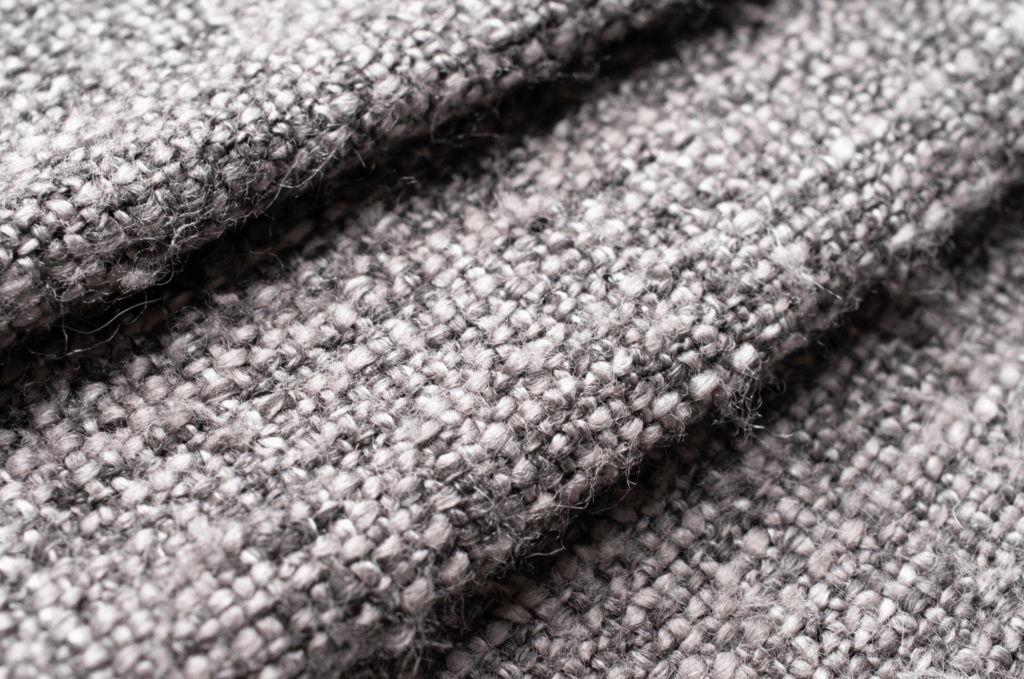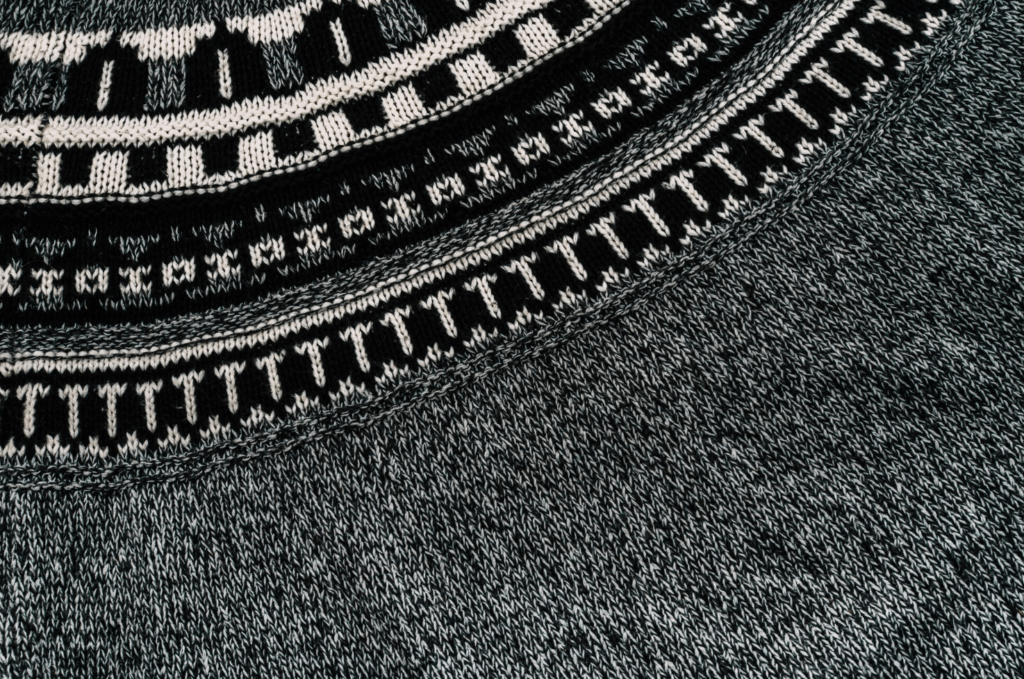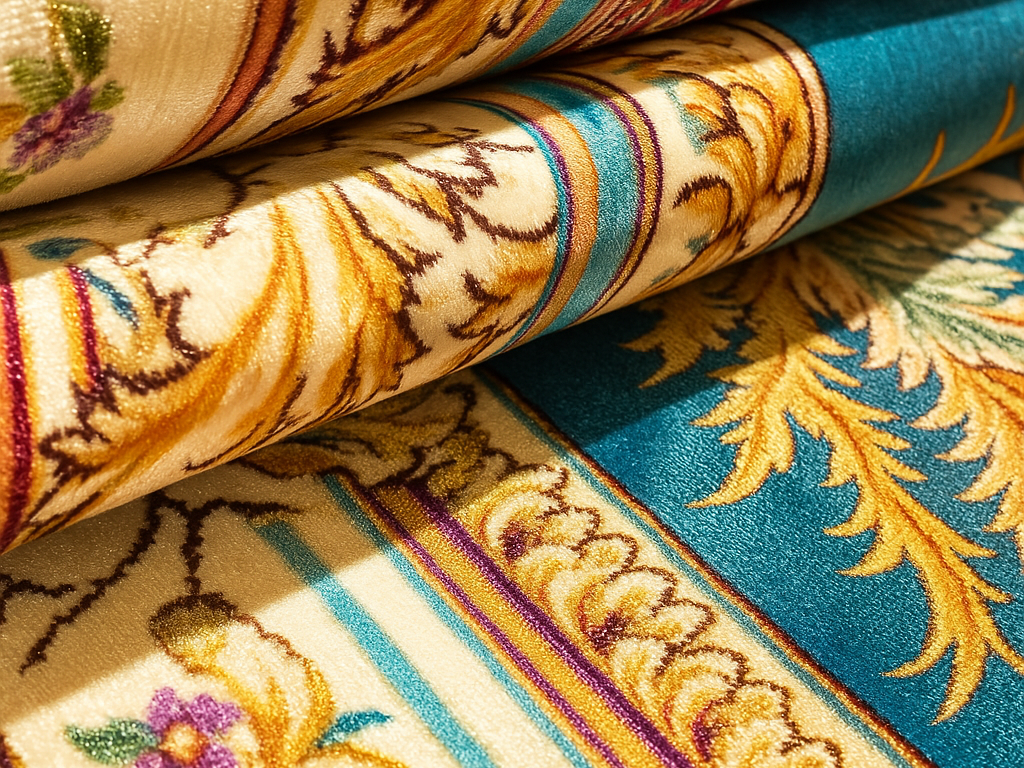When you’re shopping for a high‑quality rug—something that will bring warmth underfoot, longevity through years of use, and character to your space—the question of material is paramount. With so many rugs on the market, and a rising tide of synthetic imitations designed to look like wool but at a fraction of the cost, knowing how to identify genuine wool becomes a valuable skill.

At Valhak, we’re committed to helping you make informed choices. Below you’ll find a detailed, human‑toned guide to recognizing wool rugs, how they differ from synthetic alternatives, and what to watch out for in your purchase process.
1. Why Choose a Genuine Wool Rug?
Before we dive into the how‑to, it’s worth pausing to ask: Why wool at all? Here are a few reasons:
- Natural resilience and durability. Wool fibers have a springy structure, allowing them to bounce back under pressure, making them well‑suited for foot traffic.
- Comfort and feel. Wool generally feels warm, soft, and inviting underfoot; it doesn’t have the plasticky sheen or coldness that some synthetics carry.
- Moisture handling and stain resistance. Wool is naturally more absorbent and breathable than many synthetic fibers, which gives it advantages in comfort and longevity—when properly maintained.
- Value and investment. Because genuine wool and artisan processes cost more than mass‑produced synthetics, a wool rug often represents a longer‑term investment—not just decor for now.
- Aesthetic richness. Natural fibers tend to show subtle depth of colour, texture, and variation that synthetics struggle to replicate convincingly.
That said, synthetic rugs do have their place: they’re often cheaper, lighter, more stain‑resistant, and can make sense for very high‑traffic, budget‑conscious, or outdoor‑friendly applications. Your decision should reflect your use case, budget and priorities. But if you are aiming for authenticity, tactility and longevity, genuine wool is hard to beat.
2. Recognising Genuine Wool: 10 Key Checks
Here we’ll walk through ten practical signs that a rug is genuine wool (or, at least, predominantly wool), contrasted with how synthetics tend to behave. It’s not about a single test—rather a combination of observations that together tell the story.

Look at the Sheen and Texture
The way a rug interacts with light and how the fibres feel under your fingers can be a strong clue.
- Wool typically has a muted or soft matte finish, because the fibre surface is scaly and diffuses light rather than reflecting it like a smooth plastic would.
- Synthetics (like polypropylène, Nylon, polyester) often look more shiny or “slick” under light—this reflective quality is a tell.
- When you touch the pile: wool should feel warm, slightly textured, resilient. A synthetic may feel flatter, smoother (even “plasticky”), perhaps cooler to the touch.
- Try gently pressing the pile down with your hand: a wool rug will often “bounce back” a bit, whereas many synthetics will stay flattened. This behaviour isn’t absolute, but helps.
Check the Backing and Construction
Often overlooked: how the rug is constructed and what the underside looks like.
- On a genuine wool hand‑knotted (or hand‑tufted) rug, you’ll often see individual knots, slight irregularities, and a backing of natural materials (cotton, jute) rather than heavy plastic mesh.
- Tapis synthétiques (especially machine‑made) often have uniform stitching, perfectly repeating patterns, and synthetic backings (plastic, rubberized mesh) that look “factory” rather than artisanal.
- Flip the rug: does the design show clearly on the back (as it typically will in a hand‑knotted wool rug)? Or does the design fade or blur, or is the backing covered in rubber or a heavy synthetic material? The latter suggests synthetic content.
- Check the fringe: in genuine hand‑woven wool rugs the fringe is often part of the foundation (warp threads continuing past the weave). In many machine rugs the fringe is sewn on afterward.
Feel Weight and Thickness
Wool has density, life, and a certain substantial feel.
- A genuine wool rug will often feel heavier for its size than a lightweight synthetic alternative. The wool pile and natural backing add mass.
- The pile thickness (height of the fiber) matters: wool tends to hold pile height well; synthetics may compress faster (especially cheaper synthetics) or feel overly flat.
- When you turn up the corner: is the fabric beneath soft and fibrous, or is there a stiff synthetic backing? The latter is a red flag.
Water Test (Absorbency)
A subtle but telling check (use cautiously, in a hidden corner) is how the rug responds to water.
- Wool is more absorbent. If you place a drop of water on the pile, genuine wool will more readily absorb the moisture or darken slightly, rather than letting the water simply bead.
- Synthetics (especially polypropylene) are often hydrophobic: the droplet may sit on top or run off rather than soak in.
- Note: this isn’t always definitive (some synthetics are treated; wool may be tightly woven), but when combined with other checks, it helps.
Burn Test (Cautiously!)
One of the most distinct tests—but requires caution, and should only be done on a small sample in a safe environment.
- Wool is a protein fibre: when burnt, it tends to char slowly, smells like burning hair, and leaves behind soft, brittle ash.
- Synthetics melt, drip, burn quickly, often with black sooty smoke and a chemical/plastic smell, and may leave behind a hard bead.
- Because it involves flame, the burn test must be executed with caution (ventilation, small sample, fire‑safe surface). Many buyers prefer not to do this, especially on a rug they don’t own yet.
Smell and “Feel” of Age
Natural fiber rugs often carry subtle signs of age, use, and material origin.
- Some wool rugs will have a faint wool‑/sheep‑like smell, especially if they’ve never been overly treated or cleaned aggressively. One blog notes: “natural fibres can hold a very earthy smell… synthetic wool does not.”
- With use, wool tends to wear in gracefully: the pile may soften, flatten in traffic areas, but the colour depth and richness tend to remain. Synthetics may show uneven wear, flattening, or colour shifting sooner.
Look for Imperfections (Don’t Fear Them)
In the world of authentic textiles, slight irregularities are a positive sign, not a negative one.
- A genuine handmade wool rug may have slight variations in knotting, sometimes small colour variances (called abrash in oriental rugs), and minor irregularities. These reflect the human hand.
- If the rug is perfectly uniform—with machine‑like precision—it could still be wool, yes—but more likely machine‑made or synthetic. In any case, the perfect machine uniformity is one flag among many.
- Consider the pattern edges, the back row, minor misalignments: these are often hallmarks of genuine craftsmanship.
Label, Price, and Origin
While not always decisive, practical business signals matter.
- A rug labelled “100 % wool” (or “pure new wool”) is a good sign—but check: does the label match what you see and feel? Some blends may be labelled but mis‑represented.
- If the price is extremely low (especially for a large size), ask questions. A very cheap large rug purporting to be artisan‑hand knotted wool may deserve scrutiny. One source notes: “If you’re paying a low price, then you can bet you’re buying a rug made from nylon, rayonne, or polyester.”
- Origin of manufacture: handmade tapis en laine often come from regions with traditions (Persia, Turkey, India, Nepal, etc.). Machine synthetic rugs can be mass‑produced anywhere. The provenance story, while not conclusive, offers context.
Colour Depth and Dye Behaviour
How the rug takes and holds colour can hint at material quality.
- Wool accepts dye differently from synthetic fibres: the result can be richer, deeper, less “flat” than many synthetics. Also, natural dye processes (in higher‑end wool rugs) may introduce subtle colour variation that adds character.
- Synthetics can sometimes use high‑sheen dyes which have a slightly “bright” or artificial look, or may fade/bleach differently. One guide to high‑quality rugs emphasises “material is everything” in relation to dye and fibre behaviour.
- Over time, wool may mellow rather than fade sharply; synthetics may display colour loss, pooling of dirt in flat piles, or sheen loss in high traffic.
Longevity and Maintenance Considerations
How the rug behaves over time helps confirm the prior identification.
- A genuine wool rug, maintained well, can last decades, even generations—thanks to fibre resilience, colour retention, and natural robustness. One article states: “An authentic wool rug can last for a lifetime or more with the proper care.”
- Conversely, synthetic rugs—while often more stain‑resistant—may degrade under foot traffic, flatten out, or lose bounce and pile depth more quickly.
- Ask yourself: How is the pile after walking across it repeatedly? Does it recover? Does it look crushed? Does the backing separate or stiffen? These are working indicators of quality.
3. Putting It All Together: A Checklist for a Genuine Wool Rug

When you’re in store or browsing online, you can use the following checklist to assess a potential wool rug:
- Sheen & feel: Is it warm, soft, slightly textured? Or is it shiny, slick, plasticky?
- Construction/backing: Flip it over—natural backing, knotted irregularities suggest genuine wool; plastic mesh and perfectly uniform stitching suggest synthetic.
- Pile behaviour: Press the pile—does it bounce back? Feel thick or substantial?
- Water behaviour: (Hidden corner) Does a drop of water absorb or bead?
- Label/price/origin: Is the label clear (“100 % wool”)? Is the price realistic? Is the origin reputable for wool‑rug craftsmanship?
- Imperfections: Are there slight irregularities in pattern or weave? That’s a good sign.
- Color depth: Does the colour feel rich, dimensional, not overly bright in an artificial way?
- Refresh/maintenance: Ask: how is the rug maintained? Has it been cleaned properly? How has it held up in use?
- Expert confirmation: If available, get an expert or retailer confirmation. In‑store salespeople or trusted brands should help you understand material and construction.
- Long‑term view: Think: is this rug intended to be a short‑term décor piece, or a long‑term investment? If the latter, wool typically wins—but only if truly wool.
4. Why Some Synthetics Mimic Wool & How to Stay Protected

It’s helpful to understand pourquoi synthetics appear in the market trying to emulate wool, so you’re not fooled.
- Manufacture and cost: Synthetic fibres like polypropylene, nylon, polyester are cheaper to produce and can be made in large scale. This cost‑advantage allows retailers to offer “wool look” rugs at lower prices. One cleaning‑services blog noted that synthetic rugs are often the cheaper alternative.
- Consumer demand: Shoppers increasingly want the look of wool—texture, pattern, comfort—but at a lower budget. Manufacturers respond.
- Visual similarity: Advances in machine weaving and dyeing mean synthetics can visually mimic wool quite well—especially at first glance—but may differ in feel, behaviour and longevity.
- To protect yourself: Rely not on a single sign, but multiple. Ask informed questions of the retailer. If you’re buying online from a brand like Valhak, request detailed close‑up photos (pile, back, fringe), ask for material certification, inquire about construction (hand‑knotted, hand‑tufted, machine‑woven).
- Be cautious of claims such as “looks like wool” or “wool‑look.” These may mean “not wool.”
- Remember: A high‑quality synthetic might be entirely appropriate for your space—but if you are paying wool‑prices you should be getting wool (or something very clearly declared as wool).
5. Common Myths (and Clarifications)
Myth 1: “If it says ‘wool‑blend’, it’s still mostly wool.” Clarification: A wool‑blend could mean many things (50/50, 30/70, etc.). The wool component may be small; the remainder may be synthetic. If you’re aiming for the benefits of pure wool, check the exact ratio.
Myth 2: “Wool is high‑maintenance and that makes synthetics better for any home.” Clarification: Wool does require care (gentle cleaning, periodic professional cleaning, avoiding harsh chemicals) but with appropriate maintenance, it often outlasts many synthetics.
Myth 3: “If it feels good, it must be wool.” Clarification: Some synthetics are engineered to feel plush and soft. That doesn’t guarantee wool content. Combine feel with other tests (backing, water behaviour, labels, construction).
Myth 4: “All machine‑made rugs are synthetic.” Clarification: Not necessarily. There are machine‑made wool rugs, but many cost less compared to hand‑knotted wool rugs. The point is: machine‑made doesn’t automatically mean synthetic—but if machine + low price + no wool label = high risk.
Myth 5: “If it’s cheap, I’m still getting a decent wool rug.” Clarification: Sometimes yes—but “cheap” wool usually means lower grade wool, machine production, or mixed content. It may not carry the longevity or richness of a high‑quality wool rug.
6. Why Valhak Focuses on Genuine Wool
Au Valhak, we believe in tangible quality. When you choose a wool rug from our collection:
- You’re getting natural fibre authenticity, which means better longevity, better feel, and better life under your feet.
- You’re likely getting higher‑grade wool, better colour depth, and craftsmanship—rather than cheaper shortcuts.
- We want your rug to be an investment, not just décor. We know that genuine wool, properly made, properly cared for, carries value.
- We also want you, the consumer, to be educated—not just sold. Knowing what to look for ensures you feel confident in your purchase, and helps you care for it properly over time.
7. Care & Use Tips for Your Wool Rug
Since you’ve invested (or intend to invest) in wool, caring for it will help maximise its return in beauty and service.
- Vacuum regularly (without harsh beater bars on delicate loops) to keep fibre lively and remove embedded dirt.
- Rotate the rug periodically (every 6–12 months) so that traffic wear is even and the pile breaks in uniformly.
- Address spills quickly: though wool has some natural resistance, it still absorbs liquids; blot liquids gently, avoid harsh chemicals.
- Professional cleaning every few years (especially for larger pieces) will help restore pile resilience and colour depth.
- Avoid dragging heavy furniture which can crush and flatten wool pile. Use pads under legs where needed.
- Protect from direct strong sunlight which may cause colour fading over long periods—and consider pile direction (some wool rugs have a “nap” or directional pile).
- Use a good rug pad underneath: this improves comfort, reduces shear on the backing, and enhances longevity.
8. Conclusion
In the sea of rug options today, knowing how to identify a genuine wool rug gives you a real advantage—whether you’re investing in a piece for your living room, a high‑traffic hallway, or a treasured zone of your home. At Valhak, our commitment is to authenticity, craftsmanship and education so you can shop with confidence.
By paying attention to how the rug looks and feels (sheen, texture), how it’s constructed (backing, fringe, knots), how it behaves (absorbency, wear), and what the documentation (labels, origin, pricing) tell you, you’ll be far more likely to end up with the real deal—and thus something that not only looks good now but ages gracefully through years of enjoyment.
When you do choose genuine wool—and care for it accordingly—you won’t just be buying a rug; you’ll be making an investment in warmth, style, comfort and durability. And that’s a choice we’re proud to support.
9. FAQ
Q1. How can I tell if a rug is 100 % wool or a wool‑blend?
A: Check the label for material percentages; ask the seller. Investigate construction and feel: pure wool tends to have the characteristics described above. If the label says “wool‑blend” without further detail, ask for percentages.
Q2. Can synthetic rugs ever feel like wool?
A: Yes—manufacturers have increasingly refined synthetics to mimic wool’s look and feel. That’s why feel alone isn’t enough. Combine feel with other tests (backing, water behaviour, construction) for a clearer answer.
Q3. Is a cheaper rug that says “wool” necessarily bad?
A: Not necessarily—but you should ask questions. Cheaper wool rugs may use lower‑grade wool, machine construction, or blended fibres. If you’re paying wool‑prices, you might reasonably expect higher quality.
Q4. Are wool rugs harder to clean than synthetics?
A: They require a tad more attentive care (gentler cleaners, professional clean‑ups, good rug pad) but that doesn’t make them “hard” to maintain. And their durability and quality often reward the effort.
Q5. If I find a rug that looks like wool but the tag is missing or unclear—should I avoid it?
A: Not necessarily—but proceed cautiously. If the tag is missing, ask for detailed photos (front, back, fringe), ask questions about construction and origin, do the feel/backing/absorbency checks. If you’re uncertain, consider buying from a trusted retailer (such as Valhak) who can certify material.


